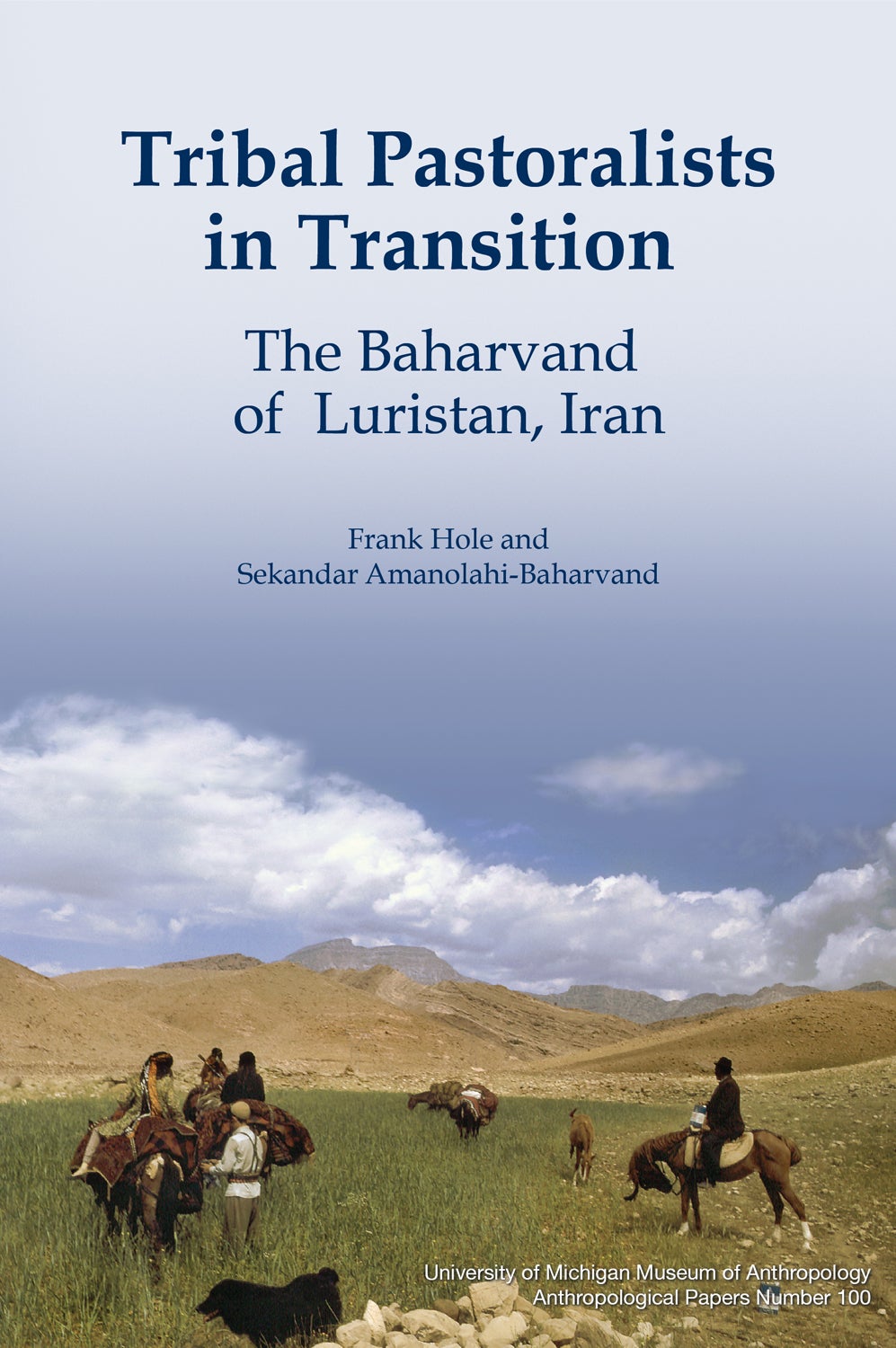Frank Hole and Sekandar Amanolahi-Baharvand
In the spring of 1973, the Baharvand tribe from the Luristan province of central western Iran prepared to migrate from their winter pastures to their summer camp in the mountains. Seasonal migration in spring and fall had been their way of life for as long as anyone in the camp could remember. They moved their camp and their animals—sheep, goats, horses, donkeys, and chickens—in order to find green pastures and suitable temperatures. That year, one migrating family in the tribe allowed an outsider to make the trip with them. Anthropology professor Frank Hole, accompanied by his graduate student, Sekandar Amanolahi-Baharvand, traveled with the family of Morad Khan as they migrated into the mountains. In this volume, Hole describes the journey, the modern and prehistoric sites along the way, and the people he traveled with. It is a portrait of people in transition—even as the family follows the ancient migration path, there are signs of economic and social change everywhere.
Frank Hole is a professor emeritus of anthropology at Yale University. For more than 40 years he has done archaeological and ethnographic research in Iran and Syria, including excavations at Ali Kosh and Chagha Sefid in Deh Luran, Iran. His work has focused on the development of agriculture and animal husbandry. He has previously published Cueva Blanca: Social Change in the Archaic of the Valley of Oaxaca (with Kent V. Flannery, 2019), Studies in the Archeological History of the Deh Luran Plain: The Excavation of Chagha Sefid (1976), and Prehistory and Human Ecology of the Deh Luran Plain: An Early Village Sequence from Khuzistan, Iran (with Kent V. Flannery and James A. Neely, 1969).
Sekandar Amanolahi-Baharvand is an emeritus professor of anthropology at Shiraz University in Iran. He earned his PhD from Rice University, where his dissertation was an ethnographic study of the Baharvand. Throughout his career, he has continued to research and write about the Lurs and Luristan. Previous works include Tales from Luristan (ed., 1987).
116 color and black and white photographs and maps. Supplementary videos (on the migration, weaving, harvesting, and the bazaars) can be found on Fulcrum at fulcrum.org/UMMAA.
Order from the University of Michigan Press.
Publisher: Museum of Anthropology
Year of Publication: 2021
Location: Ann Arbor, MI
Pages: 402
Price: $45
Print ISBN: 978-0-915703-99-9
Ebook ISBN: 978-1-951538-74-3
Monograph Series / Number: Anthropological Papers No. 100
Tables / Illustrations: 116 color and b&w photographs and maps

